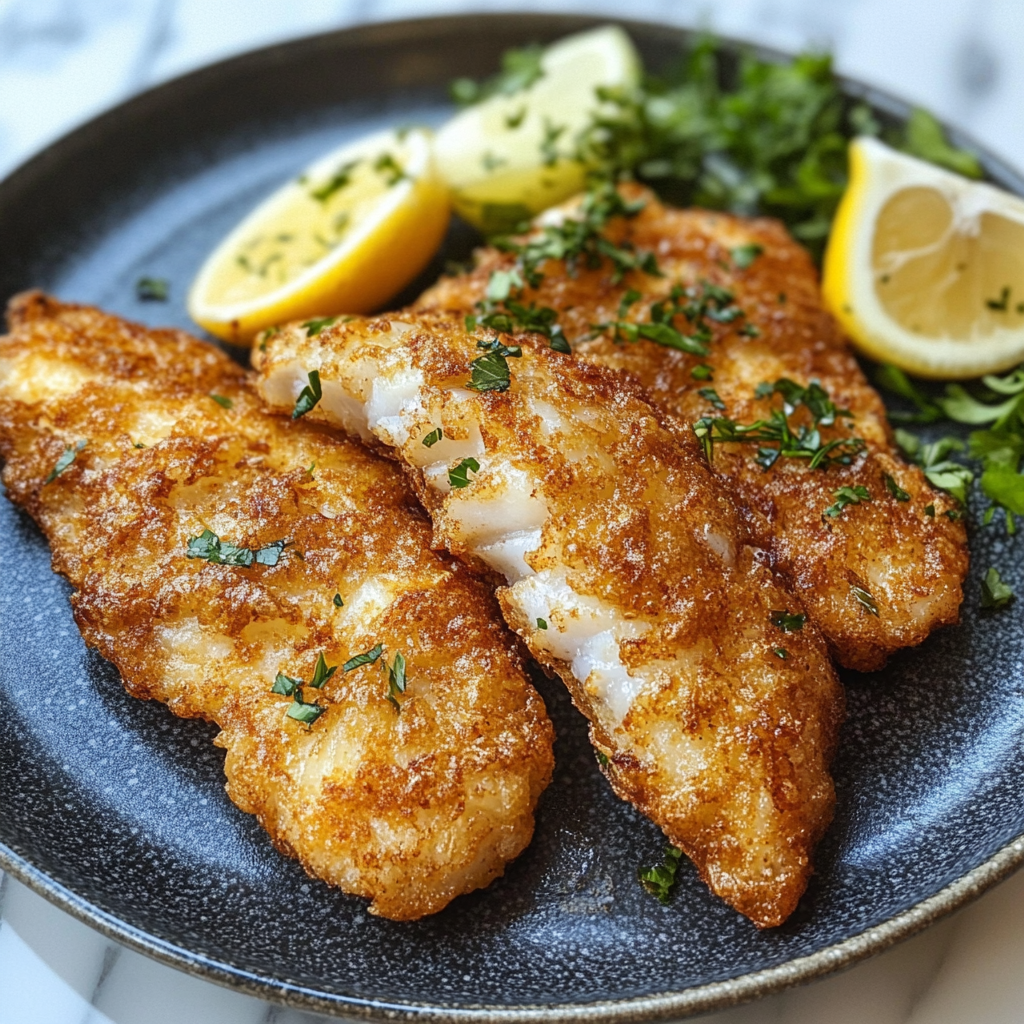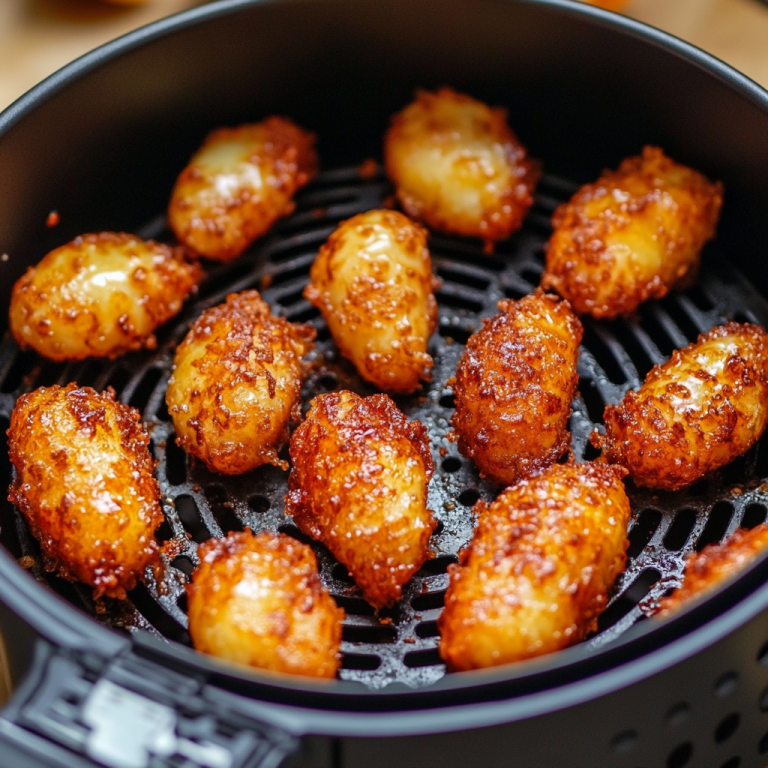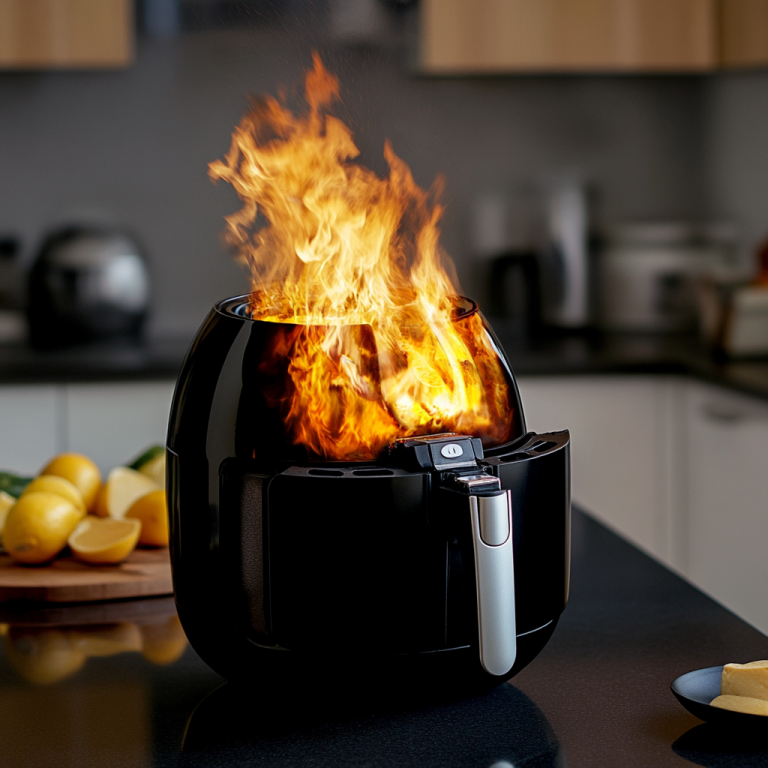Fish Air Fryer Temperature Guide: Optimal Settings For Perfect Results
If you’re looking to elevate your cooking game, an air fryer might be the secret ingredient you’ve been missing. It delivers crispy, delicious results and promotes healthier eating by reducing the need for excess oil. The best types of fish to cook in an air fryer will be explored, along with tips on preparation, seasoning, and optimal cooking temperatures. Additionally, a comparison of air frying with other cooking methods will help you make the best choice for your meals. Dive in and discover the benefits of air frying fish!
Benefits of Using an Air Fryer
Utilising an air fryer for culinary purposes provides numerous advantages that extend beyond mere convenience. This innovative kitchen appliance enables the achievement of a crispy texture that rivals that of traditional deep frying, all while utilising significantly less oil. The health benefits associated with air frying include reduced fat intake, lower calorie consumption, and enhanced energy efficiency, making it an ideal option for quick meals and family dinners. By incorporating air fryers into meal preparation routines, individuals can enjoy flavoursome dishes without compromising nutrition or taste. With its capability to cook food quickly and evenly, the air fryer can serve as a transformative tool for busy households. One can prepare a delicious, crunchy vegetable medley or perfectly cooked chicken in a matter of minutes, facilitating greater flexibility in meal planning. Furthermore, air fryers consume less electricity compared to traditional ovens, thereby promoting not only personal health but also environmental sustainability. As time-constrained individuals strive to maintain a nutritious diet while managing their schedules, this appliance presents itself as a dependable solution for preparing healthy meals without sacrificing flavour or texture.
Types of Fish Suitable for Air Frying
In the realm of air frying, it is important to note that not all types of fish produce the same results; however, several varieties are particularly well-suited for this cooking method. Fish species such as salmon, tilapia, cod, and trout are notably effective in air fryers, as they benefit from the even heat distribution that facilitates optimal cooking. Each type of seafood offers its own distinct flavour profiles and textures, rendering them versatile options for a variety of fish recipes. Whether one is preparing a quick meal or a family dinner, recognising the best fish selections can significantly enhance the air frying experience.
Best Fish Options and Why
Selecting optimal fish options for air frying can significantly enhance the culinary experience, resulting in flavoursome and crispy dishes. Fish such as salmon and cod are not only widely favoured but also serve as excellent sources of omega-3 fatty acids, making them a nutritious choice. Understanding the appropriate cooking temperature and duration for these fish is crucial to achieving the desired doneness, thereby enhancing their flavour profiles. With proper seasoning and cooking techniques, one can create delectable fish recipes that cater to various dietary preferences. Plus salmon and cod, other fish varieties such as tilapia and haddock also excel in the air fryer, showcasing their delicate textures and mild flavours. These fish are particularly adept at absorbing seasonings, which allows for innovative flavour enhancements from zesty lemon marinades to savoury garlic rubs. When air frying, it is essential to achieve a crispy exterior while maintaining a tender, flaky interior. Closely monitoring the cooking time, ideally around 10 to 12 minutes depending on thickness, ensures that the fish is thoroughly cooked without compromising moisture. The result is a tantalising dish that not only satisfies the palate but also aligns with a healthy lifestyle.
Preparing Fish for Air Frying
Preparing fish for air frying involves several essential steps that can significantly enhance both flavour and texture, beginning with the selection of appropriate fish fillets. Whether one chooses salmon, tilapia, or cod, the preparation process should include thorough cleaning and, if desired, marinating to infuse flavour. The incorporation of various seasoning blends or a light fish batter can further contribute to achieving a crispy exterior, thereby establishing a solid foundation for a delicious meal. By maintaining a well-organised ingredient list, meal preparation becomes more efficient and enjoyable, ensuring a rewarding air frying experience.
Seasoning and Coating Techniques
Effective seasoning and coating techniques are essential for enhancing the flavour of air-fried fish, offering a range of flavour profiles that accommodate diverse preferences. Utilising fish marinades can tenderise the fillets while infusing them with a variety of spices, thereby enriching the overall culinary experience. Experimenting with different coating methods, such as a light fish batter or various spice blends, can achieve the desired crispy texture that enhances enjoyment with each bite. These techniques not only elevate taste but also encourage seafood enthusiasts to explore new culinary possibilities. The key lies in blending various herbs and spices to create unique combinations that cater to individual tastes. For example, a citrus-based marinade can brighten flavours and introduce a refreshing tang, while a smoky paprika rub can provide a deeper, more robust profile. Incorporating breadcrumbs, panko, or even nuts into the coating can add an appealing crunch, attracting those who appreciate varied textures. Encouraging creativity with seasonings or experimenting with a sweet and spicy glaze can lead to delightful discoveries, making air-fried fish a standout dish in any meal.
Stanley Quencher ProTour Flip Straw Tumbler with Leakproof Lid 30 oz | Built-In Straw & Handle | Cupholder Compatible for Travel | Insulated Stainless Steel Cup | BPA-Free | Azure Fade
$35.00 (as of 18:35 GMT +00:00 - More infoProduct prices and availability are accurate as of the date/time indicated and are subject to change. Any price and availability information displayed on [relevant Amazon Site(s), as applicable] at the time of purchase will apply to the purchase of this product.)Crock-Pot Portable Electric Lunch Box, 20-Ounce Food Warmer, Moonshine Green | Ideal for Travel, On-the-Go | Keeps Food Spill-Free, Warm & Tasty | Dishwasher-Safe
$34.99 (as of 18:35 GMT +00:00 - More infoProduct prices and availability are accurate as of the date/time indicated and are subject to change. Any price and availability information displayed on [relevant Amazon Site(s), as applicable] at the time of purchase will apply to the purchase of this product.)Air Fryer Temperature Guidelines
Understanding air fryer temperature guidelines is essential for achieving perfectly cooked fish while ensuring food safety during preparation. Each type of fish possesses its own optimal cooking temperature, typically ranging from 160 C to 204 C. Monitoring the internal temperature is crucial, as different fish require varying cooking times to attain the desired level of doneness, allowing for an enjoyable balance of flavour and texture. By utilising a reliable temperature guide, individuals can navigate the cooking process with confidence, resulting in exceptional seafood dishes.
Optimal Temperatures for Different Types of Fish
Different types of fish necessitate specific optimal temperatures for air frying to ensure they are cooked to perfection while retaining their unique flavours. For example, delicate fish such as tilapia should be prepared at a lower temperature of approximately 180 C, whereas heartier varieties like salmon may benefit from higher settings around 200 C. Consulting cooking charts can provide valuable insights into the appropriate temperatures for cooking different types of fish, ensuring that each variety is treated suitably throughout the cooking process. This knowledge is essential for achieving the desired doneness and texture in your dishes. Understanding fish cooking temperatures is critical, as overcooking can result in dry, unappetising outcomes, while undercooking may pose food safety risks. For instance, white fish varieties like cod and haddock perform optimally at around 190 C, yielding a flaky texture that is highly desirable. In contrast, denser fish such as tuna require careful monitoring at 230 C to maintain their firm, meaty consistency. By utilising a digital thermometer or adhering to recommended cooking charts, one can easily achieve the optimal temperatures for various fish types, thereby ensuring a delicious and safe culinary experience.
Tips for Achieving Perfectly Cooked Fish
Achieving perfectly cooked fish in an air fryer necessitates a combination of culinary techniques and cooking tips aimed at minimising common errors often encountered during the process. A fundamental recommendation is to preheat the air fryer to ensure even cooking. Additionally, it is important to adjust cooking times based on the thickness of the fish fillets. Utilising an internal temperature probe to monitor the doneness of the fish can yield accurate results, thereby preventing both undercooking and overcooking. By incorporating these air frying strategies, individuals can enhance their culinary experience and ensure consistently delicious meals.
Avoiding Overcooking and Undercooking
When air frying fish, it is essential to avoid both overcooking and undercooking to ensure optimal taste and food safety, which can be challenging due to varying cooking times. Overcooking may result in a dry texture that detracts from the dish’s overall appeal, while undercooking can pose significant health risks. Maintaining accurate temperature control and carefully timing the cooking process for each type of fish will help achieve the desired doneness without compromising flavour. Implementing best practices in monitoring cooking time is crucial for attaining the perfect balance. To enhance the cooking experience, it is advisable to invest in a quality thermometer to accurately track the internal temperature, as different fish varieties have specific ideal cooking temperatures. Additionally, closely monitoring the cooking process and flipping the fish halfway through can promote even cooking. Consulting cooking charts specific to air frying is recommended, as they provide valuable guidelines on timing based on the weight of the fish. Finally, allowing the fish to rest briefly after cooking enables the juices to redistribute, thereby ensuring a flavoursome bite. Adhering to these strategies will not only elevate the quality of the dish but also prioritise food safety.
Alternative Cooking Methods for Fish
Exploring alternative cooking methods for fish expands culinary possibilities, presenting diverse textures and flavours that can accommodate various dietary preferences. Techniques such as grilling, deep frying, and baking offer distinct approaches to preparing seafood, resulting in a wide array of dishes. Each method contributes its own unique characteristics, from the smoky flavour imparted by grilling to the rich taste associated with deep-frying. A comprehensive understanding of these alternatives enables one to select the most suitable method for meal inspiration and culinary experimentation.
Comparing Results and Health Benefits
A comparison of various cooking methods reveals significant differences in both taste and health benefits, which can considerably influence meal preparation decisions. Air frying is particularly notable for its low-fat cooking capabilities, utilising minimal frying oil in contrast to traditional deep frying, resulting in a healthier meal option. Fish prepared using the air frying method tends to retain more moisture and flavour, enhancing the overall taste. Understanding these distinctions enables individuals to make informed choices regarding their cooking techniques and dietary preferences. When evaluating the health implications of these methods, it is evident that air frying not only reduces calorie intake but also mitigates the risks associated with excessive oil consumption, such as cardiovascular issues. In contrast, deep frying frequently increases the fat content of foods, transforming what could be a nutritious dish into a less favourable choice. Additionally, air frying typically requires shorter cooking times, which helps preserve nutrients that may be lost through longer cooking processes. Ultimately, these differences underscore the importance of recognising how various cooking techniques can contribute to a healthier lifestyle while still delivering flavoursome meals.
Simple Modern 40 oz Tumbler with Handle and Straw Lid | Insulated Cup Reusable Stainless Steel Water Bottle Travel Mug Cupholder Friendly | Gifts for Women Men Him Her | Trek Collection | Almond Birch
Now retrieving the price.
(as of 18:35 GMT +00:00 - More infoProduct prices and availability are accurate as of the date/time indicated and are subject to change. Any price and availability information displayed on [relevant Amazon Site(s), as applicable] at the time of purchase will apply to the purchase of this product.)









